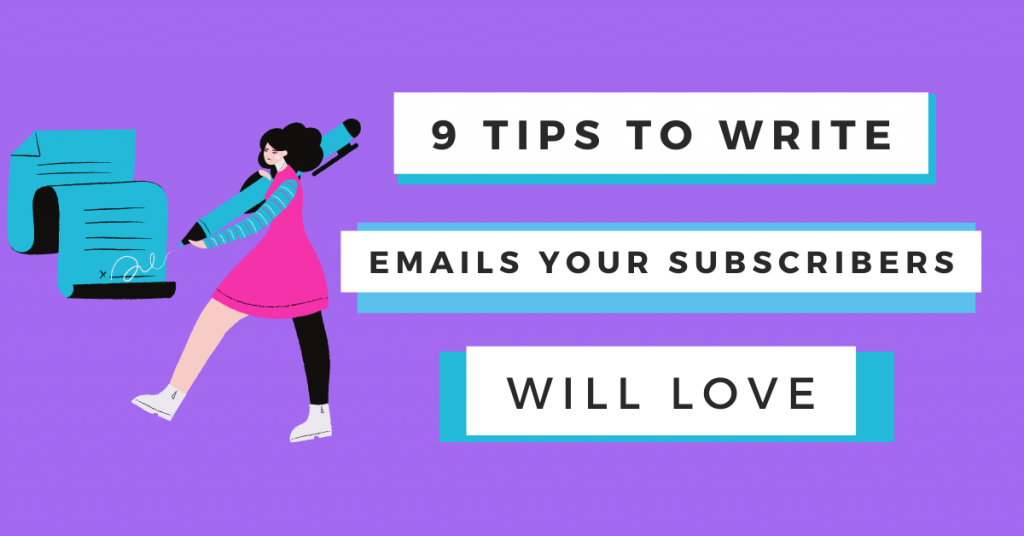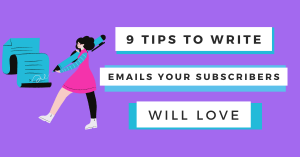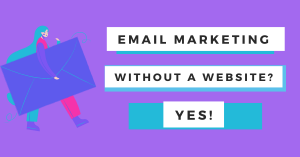- Why should you send marketing emails?
- 9 Email writing tips to keep your subscribers engaged and primed to buy
- Send high-converting emails your subscribers enjoy
Writing effective, compelling emails that your customers will love to read and buy from is a skill many business owners struggle with.
How do you create an email that captures the attention of your target audience while also selling them on what you have to offer? It can seem like a daunting task, but it doesn’t have to be!
With the right tips and practices, you can craft emails that are both engaging and persuasive.
In this guide, I’ll teach you how you can write compelling email copy that resonates with your customers and encourages them to take action so that you can generate a limitless supply of high-paying clients.
Why should you send marketing emails?
There’s an endless supply of options for marketing tactics and strategies. But there’s a good reason I come back to emails time and time again when advising my private clients.
Sending consistent marketing emails allows you to stay in touch with your current customers, build relationships with new prospects, create brand awareness, and increase engagement.
Plus, emails are easy to measure – you can track open rates, click-through rates, and other metrics that give you an idea of the success of your campaigns.
One caveat about the above – not all email metrics are reliable to track. For instance, email open rates aren’t as reliable since some of the latest iOS privacy updates.
Marketing emails are especially important for small business owners because they provide an affordable and effective way to reach a large audience.

Whether you’re generating traffic using paid ads or organic methods, they’re costing you – either in time or money.
But adding people to your email list and emailing them frequently allows you to stay in touch and make the most of your investment!
Sending daily emails is the best way to lower your cost per acquisition, especially if you’re using paid ads.
Because if you’re only relying on ads to get people to convert, you’ll need to pay every time someone sees your brand.
But with emails? Sending an email is free if you write it yourself! Yes, you need to pay for an email marketing tool… But many of them are free to start and cost under $100 per month.
9 Email writing tips to keep your subscribers engaged and primed to buy
Sending emails can help you get clients, yes… but not just any emails will do.
If you need help writing emails that turn subscribers into friends (and then later into buyers), here are some of the best tips I’ve learned from my private clients’ campaigns as well as my own!
1. Know your market first
To write engaging emails, you need to understand your target audience and what resonates with them.
Get to know their pain points, desires, interests, and motivations so you can craft emails that speak directly to them.
Knowing your market will also help you create more targeted content that resonates better with your readers and encourages them to take action.
One way to get to know your market is by engaging with them on social media and other platforms where they hang out. This can help you gain insights into what matters most to them and how they communicate with each other.
You should also keep an eye on popular trends in your industry so that you can create content that is timely and relevant for your customers.
But another effective way is to – get this – talk to your subscribers. And I mean, talk to them for real.
Do your best to generate as many appointments as you can so you can dig into your ideal market’s inner desires and struggles. Invite people to hit reply on your emails so you can start conversations.
While it can be tempting to automate this process, you won’t ever know what your people really want unless you interact with them directly.
2. Send an email 3 to 7 times a week
Sending emails on a regular schedule is crucial for maintaining engagement with your subscribers.
How often you send will depend on how engaged your customers are and how quickly you can create content that resonates with them. But it’ll also depend on your level of comfort.
Based on results I’ve gotten for myself and my clients, it’s best to send an email 3 to 7 times a week in order to keep your audience in the loop. The more email ideas you have, the more you should send!
Sending emails every day helps you stay in the mind of your subscribers and build a relationship with them. When people see your emails, they will remember who you are and what you do.
And when they’re ready to buy, you’ll be the first person they think about.
3. Write in a conversational tone
When writing your email copy, it’s important to maintain a conversational tone. This means avoiding the use of long and overly technical words and instead opting for language that is easy to read and understand.
Additionally, including personal stories or anecdotes in emails can help make them more relatable for readers.
Using storytelling techniques such as metaphors, analogies, and visual imagery are also effective ways to convey your message in an engaging manner.
By incorporating these elements into your emails, you can easily demonstrate how your product or service can provide value to customers.
Finally, be sure to keep sentences short and concise. Keep paragraphs short, too.
That’ll create white space, which is much easier on the eyes that a huge block of text!
4. Make an offer in every email
When writing compelling email copy, don’t forget to segue into an offer of some kind in every message.
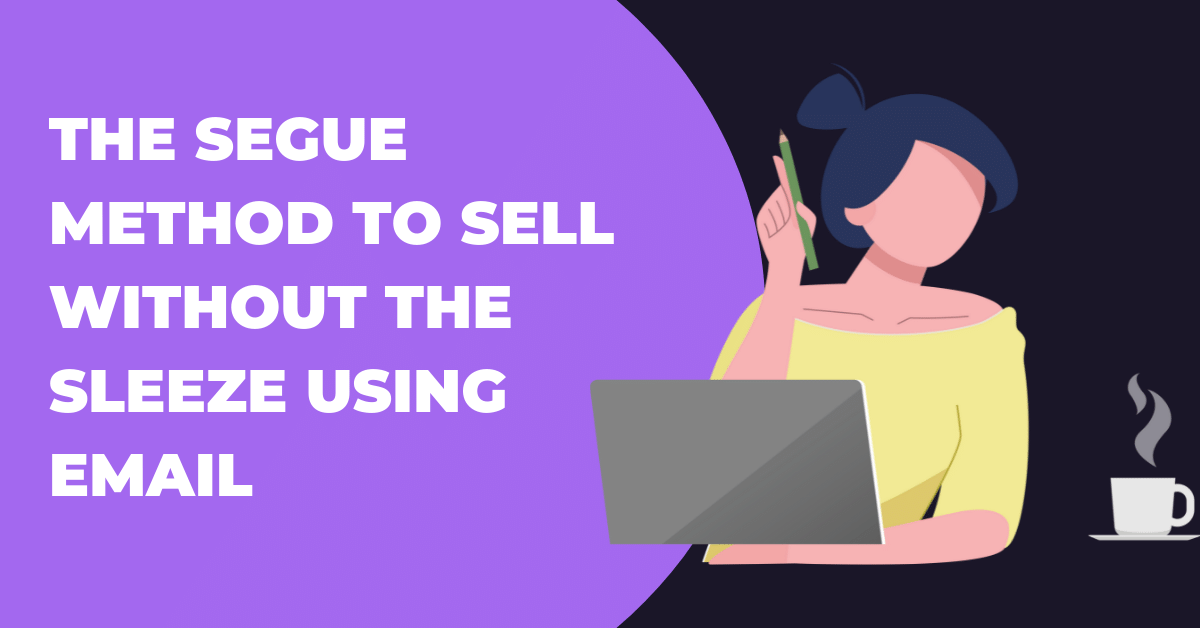
It’s tempting to send newsletters that only contain “value” without an offer in them. And while some small business owners are scared of making an offer in every email… it’s possible to do it without scaring subscribers away!
It’s all in how you do it. The key is to not treat your email list as a booty call.
For example, if every email you send is a glorified pitch fest – sure, people may lose interest. But if you make those emails valuable and fun to read, there’s no shame in adding a short and concise offer at the end.
Be specific in your offer and tell people exactly what to do to take you up on that offer. For example, if they need to hit reply or click on a link, don’t leave that up to interpretation.
5. Speak to the right pain points and desires
When writing compelling email copy, it’s essential to address the right pain points and desires of your readers. Doing so will help increase conversions as customers can relate to the message and be motivated to take action.
Start by researching common problems that your target audience faces and then use this information to create emails that speak directly to them.
For example, if your product or service solves a common problem that many people have, highlight this when crafting your email copy.
Additionally, you should also tap into the desires of customers and speak to their aspirations. How can what you’re offering help them achieve their goals? How will it make their life easier?
Each email is a new opportunity to make a case for your services! Have fun with it and think of new angles from which to tackle these points.
6. Tell stories
Including stories in emails is a great way to engage customers and make your message more memorable.
It also allows readers to connect with the content on an emotional level, which can increase conversions – but also rev up the entertainment factor.
When writing stories for email campaigns, focus on creating narrative arcs that draw in readers and leave them wanting more.
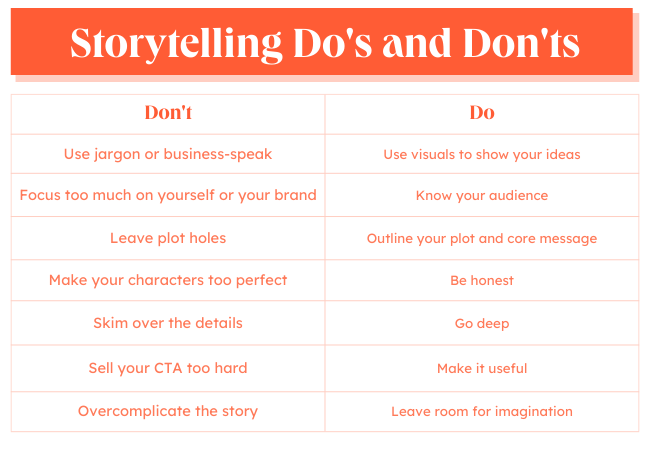
Use vivid language to paint a picture and help readers imagine themselves as the main character of your story.
Additionally, you can also add personal touches to stories by mentioning the names of customers who have previously benefitted from your offers.
7. Send emails manually
One mistake that many small business owners make is sending their email campaigns automatically in a drip sequence way too early.
While automated emails may save time, they often lack the powerful messaging needed to really connect with customers and compel them to take action.
Instead of relying on automation, manually write your emails and send them when you have the time to do so. This will help you create messages that are tailored to the needs of your customers and make them feel like they’re getting a personalized message from you.
But it’ll also let you gauge the response of those emails. Imagine writing and automating 10 sales emails… only to find out your subscribers don’t care.
Sending manual emails first lets you test what works and what doesn’t. When you know what works, you’ll be able to create automated campaigns if you want!
8. Format your email for easy reading
When writing emails, it’s important to format your message in a way that makes it easy for readers to consume the content. Doing so will help keep customers engaged and increase the chances of them taking action.
To make your email copy more readable:
- Use short sentences and paragraphs as well as plenty of white space
- Insert a GIF or an image, but do so sparingly to avoid getting flagged as promotional content
- Use a large font that’s easily readable on every device, including mobile devices
Additionally, use bullet points and numbered lists to make it easier for customers to skim through the content. (See what I did there?)
9. Entertain your subscribers
When crafting compelling email copy, don’t forget to include elements of entertainment. Doing so will help make your emails stand out and keep readers engaged!
One way to do this is to inject a bit of humor into your messages. This could be in the form of a funny joke or an amusing anecdote.
But if you’re not a funny kind of writer, you can also:
- Share polarizing opinions that make your subscribers think
- Give your thoughts on recent industry news
- Explain common myths or mistakes people make in your industry
Remember that practice makes perfect. The more often you write emails, the better you’ll become at making them entertaining.
Send high-converting emails your subscribers enjoy
Creating compelling email copy is a great way to engage customers and get them to take action. By following the tips outlined above, you can craft emails that are persuasive, entertaining, and easy to read.
Ultimately, this will help improve your conversion rates and build strong relationships with customers.
If you struggle to write these emails on your own, I can help! Schedule a strategy call with me and I’ll help you come up with an email marketing strategy that fits your goals.


